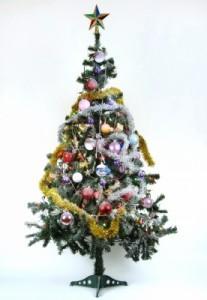
img via FreeDigitalPhotos.net
Every year, millions of Americans (30 million, in fact), head out to pick up a live Christmas tree. Some get them from local farms, where they get to wander the farm finding the perfect tree to cut down, whereas others drop by a parking lot to get trees trucked in from often distant locations. However, more people than ever are turning to artificial Christmas trees to adorn their homes for the holidays. The latest numbers indicate that about 50 million artificial trees go up every year, and this number is increasing, not decreasing.
Given the debate surrounding which option is better for the environment, it’s a good idea to take a close look at each side.
Benefits of Fresh Trees
Nothing can be greener than a real, green, fresh Christmas tree, right? In addition to aesthetic factors such as how pretty they look and how fragrant they smell, fresh trees have several environmental benefits. Most notably, the trees themselves are part of the process of removing carbon dioxide from our air and replacing it with oxygen, with the average tree getting rid of 1 ton of carbon dioxide during its lifetime. They also help use up storm water runoff and provide habitats for wildlife.
Disadvantages of Fresh Trees
Christmas tree farmers often have to use pesticides to keep bugs from destroying trees, and these pesticides can get into the soil and waterways. In addition, perhaps the largest disadvantage is all the energy that’s consumed during the process of growing and transporting the tree each and every year. Especially if you live in an area where coniferous trees don’t naturally grow, your tree will have to be driven from hundreds of miles away, not to mention the gas you’ll use getting it from the lot to your house.
Benefits of Artificial Trees
Artificial Christmas trees are reusable, which means that once you make the investment in the tree, you’re not consuming any additional energy each year you use it. They’re also more convenient for families, allowing you to avoid the extra trip out of the house because you just have to pull the tree out of the basement, attic or garage. Plus, there’s no needles on the floor and no fire hazard because the tree won’t dry up over the course of the month.
Disadvantages of Artificial Trees
The main disadvantage of artificial trees is that they are made out of polyvinyl chloride (PVC), which is a plastic that requires a lot of natural resources to produce. In addition, PVC breaks down very slowly, so trees that are discarded will sit in landfills for decades. Lastly, most trees are made in China, which means they have to be shipped all the way across the ocean before they make it into our stores.
What’s the Green Choice?
Although it would be convenient if there were a simple answer to which choice is greener, it depends. You need to take into account variables like where you live, what size of tree you prefer, and how long you would keep an artificial tree if you were to get one. The last variable is perhaps the most important one, though, and if you will keep an artificial tree for at least 10 years, it’s often the greener choice.
Danielle blogs on behalf of sears and other prestigious brands she uses. She enjoys setting up her artificial tree the day after Thanksgiving and decorating with homemade popcorn and cranberry garlands. Read her work at eatbreatheblog.com.

